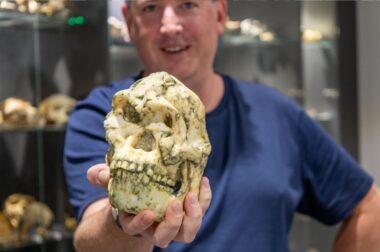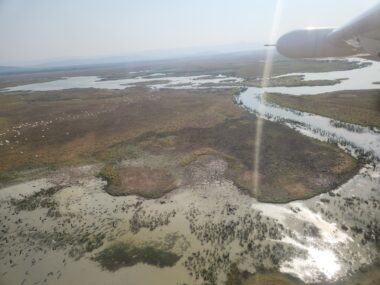The extraordinary chemical properties of liquid metals are at the heart of a new research project at Monash Engineering that aims to produce a paradigm shift in catalyst technology for industrial and biological processes.
Dr Md. Arifur Rahim, who recently joined the Department of Chemical and Biological Engineering at Monash, has been awarded a four-year Australian Research Council (ARC) Future Fellowship worth $883,000 to support research on the development of liquid metal-based artificial nanozymes.
The term “liquid metal” makes many people think of the shape-shifting robot in the science fiction movie Terminator 2, Dr Rahim said, and that image is not totally inappropriate.
“Liquid metals are metallic elements or alloys that are liquid at low temperatures, typically below 200°C,” he explained. “For example, the metallic element gallium is liquid at around 30°C, so it melts in your hand.”
Dr Rahim said the potential for gallium as a “solvent” for catalytic metals, including platinum group and other metals, has only recently begun to be explored.
Liquid metal-based alloys have recently been shown to have great potential as catalysts at low temperatures across a wide range of applications, including the conversion of carbon dioxide and methane into value-added carbon-based chemicals and the breakdown of biofuels and liquid hydrocarbons like canola oil into propylene.
“Even when solubility of the catalytic element in liquid gallium is relatively low, a gallium-based catalyst can increase the rate of a reaction by a factor of 1000 or even 10,000,” Dr Rahim said.
“Liquid gallium could also offer a versatile platform for enhancing biological reactions such as enzyme-like reactions, with major improvements in enzyme stability, activity and efficiency.”
“We believe this can open up many new possibilities in industrial, medical and environmental applications.”
The name “nanozymes” has been given to a growing group of artificial nanomaterials that can replicate the activity of natural enzymes.
“Unlike solid-state nanozymes, my group is looking to create a new class of nanozymes with liquid-like properties that can offer greater catalytic efficiency with a multitude of applications,” Dr Rahim said.
“The liquid nature of gallium keeps the catalytic sites with enzyme-mimicking activity moving and accessible, hence our use of the term ‘dynamic’ liquid nanozymes.”
Dr Rahim was excited about the possibilities the Future Fellowship offers for collaboration with others at Monash, not only within the Department of Chemical and Biological Engineering, but across disciplines.
-ENDS-
MEDIA ENQUIRIES:
Courtney Karayannis, Media and Communications Manager
Monash University
T: +61 408 508 454 or Courtney.Karayannis@monash.
Monash University Media | +613 9903 4840 | [email protected]
Visit Monash Lens for expert insights and commentary.


